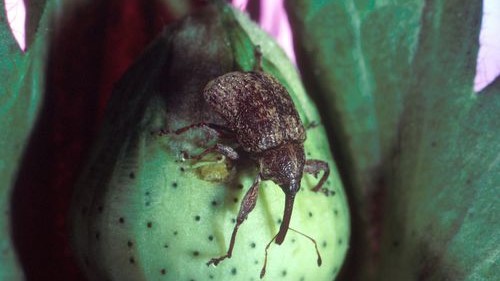Cotton is a super-popular fabric. It is used to make t-shirts and sheets, blankets and blue jeans. But did you know that cotton comes from a plant?
The cotton plant is an important American crop. It grows in Alabama, Mississippi, and other southern states. In the early 1900s, life was harsh for African Americans in those states. Many laws were unfair to Black people. Some laws limited the kinds of jobs Black people could have. So jobs were hard to find. And the pay was low.
Some African American southerners became farmers. However, they were too poor to own their own farms. To grow crops, they rented land. They paid their rent by giving some of their crops to the landowners. Those renting farmers were called sharecroppers. About one-third of sharecroppers were Black.
About 100 years ago, a tiny insect began causing big trouble for cotton and sharecroppers. It was a beetle the size of a pencil eraser. Its name? The boll weevil.
Across the South, boll weevils gobbled up cotton plants. They also laid hundreds of eggs. The eggs hatched. That produced more hungry weevils. The cotton crop was ruined! As a result, many sharecroppers lost money and jobs. They needed to find work and a better life. Tens of thousands of Black sharecroppers left for the North and West. Many other Black southerners hoped for a fairer life. They, too, moved north and west.
Some good did come from the boll weevil disaster. Farmers learned it was best to plant many kinds of crops, not just one. And scientists finally were able to get rid of the awful weevil.









